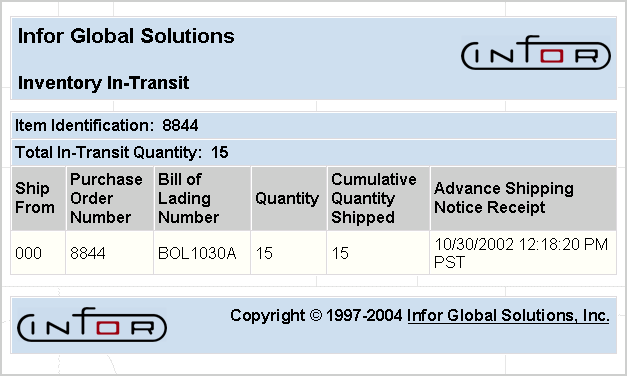
In-Transit inventory allows for a continuous replenishment of stock, ensuring that stores can cater to the ever-changing demands of consumers. If it takes an average of 2 weeks (14 days) to receive these items, the total shipment value will come out at $57.53. This type of inventory is significant because it represents products not yet available for sale but are on their way to becoming part of the retail stock. In this post, we will explore the concept of transit inventory to help you understand what they are all about.
Review and update your shipping policy
Consignment sales introduce another layer of complexity to revenue recognition. Since the consignor retains ownership until the consignee sells the goods, revenue recognition is contingent on the consignee’s sales activities. This can lead to unpredictable revenue streams, making it essential for consignors to have strong relationships and communication channels with their consignees. Detailed sales reports and regular audits are crucial to ensure that all sales are accurately recorded and revenue is recognized in a timely manner.
Stop worrying about inventory management
In an FOB destination scenario, the shipping costs would be considered a fulfillment activity and expensed as incurred rather than be treated as a part of revenue under both IFRS and US GAAP. Companies applying US GAAP as well as those applying IFRS canchoose either a perpetual or periodic inventory system to trackpurchases and sales of inventory. While the tracking systems do notdiffer between the two methods, they have differences in when salestransactions are reported.
Accounting Treatment of Goods in Transit.
In this case, determine which company should record the goods in transit in their accounting books. The FOB shipping point means that BDF Inc. (purchaser) will take ownership of the merchandise after leaving SDF Inc.’s shipping dock. Consequently, SDF Inc. will record a sales transaction on January 15, 2020, while BDF Inc. will record it as transit inventory for the same date. ShipBob also has inventory analytics that help make everything from year-end accounting reports to recording inventory much easier. One of the key benefits of effectively managed transit inventory is the reduction in lead times. By optimizing the transportation and logistics processes, businesses can ensure that products reach the shelves faster, enhancing customer satisfaction.

Tracking and Visibility
If they are not received within a year or if there is no reasonable assurance that they will be received, then the asset account for these items is written off as a loss. Goods in Transit refers to the goods that is left the shipping dock of the seller, but not yet reached the receiving dock of the buyer. Goods in transit concept is used to indicate whether the buyer or seller of goods has taken possession, and who is paying for transport.
- Work with suppliers to implement end-to-end supply chain product traceability.
- This early recognition can enhance the company’s revenue figures for the period, potentially improving financial ratios and investor perceptions.
- The problem is should we accrue costs with inventory in transit or wait until they arrive.
- Often when a business is starting out the owner will rush to quickly get all the right policies in place in time for the official launch.
tips for efficient in-transit inventory management
Merchandise Inventory increases (debit) and Accounts Payable increases (credit) by the amount of the purchase, including all shipping, insurance, taxes, and fees [(40 × $60) + (40 × $5)]. For most businesses, you take ownership of the inventory as soon as it ships. This is called FOB shipping point or FOB origin, and it means you are liable for any lost items in transit.
So, in this case, the journal entry will be recorded by BDF Inc. in its books of account on February 5, 2020. Consequently, there will be a difference between the seller’s and purchaser’s book due to shipment terms. Therefore, while BDF Inc. will record the transaction on February 5, 2020, SDF Inc. will record the same transaction on January 15, 2020.
Well-trained staff can efficiently manage inventory, identify potential issues early, and contribute to the overall smooth operation of the supply chain. By having goods in transit, retailers can quickly respond to changes in consumer demand without the need for excessive stockpiling. It is important irs says business meals are tax deductible to note that the terms of sale can be negotiated between the buyer and seller. It is therefore important to carefully review the terms of sale before agreeing to them. Likewise, building a good rapport with your suppliers can help you give accurate answers to some of the queries we just mentioned.
Led by Mohammad Ali (15+ years in inventory management software), the Cash Flow Inventory Content Team empowers SMBs with clear financial strategies. We translate complex financial concepts into clear, actionable strategies through a rigorous editorial process. Transit inventory, also known as goods in transit, pipeline inventory, or transportation inventory, refers to finished goods that have been shipped from a seller but have not yet reached the buyer’s location.
Merchandise Inventory increases (debit) and Accounts Payableincreases (credit) by the amount of the purchase, including allshipping, insurance, taxes, and fees [(40 × $60) + (40 × $5)]. To illustrate, suppose CBS sells 30 landline telephones at $150each on credit at a cost of $60 per phone. On the sales contract,FOB Destination is listed as the shipping terms, and shippingcharges amount to $120, paid as cash directly to the deliveryservice.
Risk of loss or damage to transit inventory typically transfers from the seller to the buyer at the same time that ownership transfers. For example, if the buyer arranges transportation, ownership and risk may transfer upon pickup from the seller’s premises. Conversely, if the seller is responsible for delivering the goods to the buyer’s premises, ownership and risk may transfer upon delivery.
Betty Wainstock
Sócia-diretora da Ideia Consumer Insights. Pós-doutorado em Comunicação e Cultura pela UFRJ, PHD em Psicologia pela PUC. Temas: Tecnologias, Comunicação e Subjetividade. Graduada em Psicologia pela UFRJ. Especializada em Planejamento de Estudos de Mercado e Geração de Insights de Comunicação.

